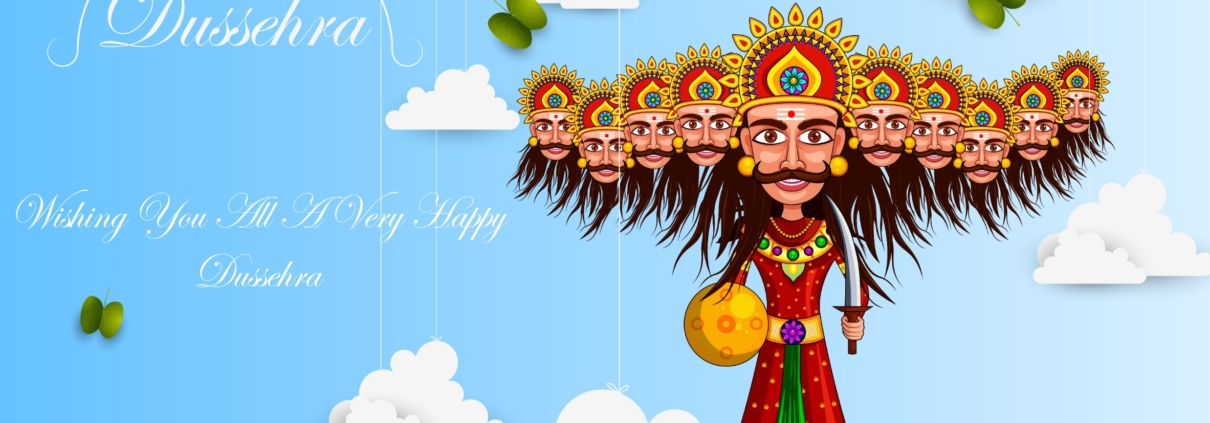Discover the Festival of Dussehra: A Family-Friendly Guide for Young Children
India is a land of vibrant festivals and celebrations, each rooted deeply in culture and tradition. One of the most exciting and meaningful festivals that families can enjoy together is Dussehra. This festival is not only a time for religious devotion but also a celebration filled with stories, colors, and exciting events that children are bound to love.
In this blog post, we will explore what Dussehra is, why it is celebrated, and how families with young children can join in the fun while learning valuable life lessons from this age-old festival. From decorating your home to crafting activities and participating in local events, there’s something for everyone in this grand celebration!
What is Dussehra?
Dussehra, also known as Vijayadashami, is one of the major Hindu festivals, celebrated with great enthusiasm across India. The word “Dussehra” is derived from the Sanskrit word “Dasha-hara,” which means the defeat of the ten-headed demon king, Ravana, by Lord Rama in the epic, Ramayana. This marks the triumph of good over evil and righteousness over immorality, which are the central themes of Dussehra.
The festival takes place on the tenth day of the Hindu month of Ashvin, which usually falls in September or October. It follows the nine-day festival of Navratri, during which devotees worship Goddess Durga. On the tenth day, Dussehra celebrates both the victory of Lord Rama over Ravana and Goddess Durga’s triumph over the buffalo demon, Mahishasura.
The Legend of Dussehra: A Story for Children
One of the most exciting aspects of Dussehra for children is the storytelling that accompanies the festival. It’s not just a religious celebration but an opportunity to introduce kids to ancient tales filled with bravery, kindness, and heroism. Here’s a simplified version of the story of Dussehra that you can share with your children:
The Story of Lord Rama and Ravana:
Long ago, in the kingdom of Ayodhya, there was a wise and brave prince named Rama. One day, Rama’s wife, Sita, was kidnapped by the evil demon king, Ravana, who had ten heads. With the help of his loyal brother, Lakshmana, and the monkey god, Hanuman, Rama fought a long and difficult battle to rescue Sita.
Ravana was powerful and had many magical abilities, but Rama never gave up. After a fierce battle, Rama defeated Ravana, and peace was restored. This victory represents the triumph of good over evil, and every year, people celebrate Dussehra to remember this important lesson.
How Dussehra is Celebrated
Dussehra is celebrated in various ways across India, with each region adding its unique touch to the festival. This diversity in celebration means that no matter where you live, you can find a Dussehra tradition that resonates with your family.
Here are some of the main elements of Dussehra that families with young children can enjoy:
- The Ramlila Performances
One of the most exciting activities during Dussehra is watching a Ramlila performance. Ramlila is a dramatic reenactment of the life of Lord Rama and his battle against Ravana. These performances are often staged outdoors and are filled with vibrant costumes, lively music, and enthusiastic actors.
For young children, attending a Ramlila is like watching a real-life superhero movie. The tale of good versus evil is visually captivating, and it’s a great way to introduce your children to the traditions of Dussehra in a fun and engaging way.
- The Burning of Ravana Effigies
The highlight of Dussehra in many parts of India is the burning of large effigies of Ravana, his brother Kumbhkarna, and son Meghnath. These towering effigies, often made of bamboo and paper, are filled with firecrackers and are set ablaze in front of cheering crowds.
Children love the spectacle of the effigies burning and the fireworks that follow. It’s a symbolic way to remind us all that good will always overcome evil, no matter how strong it seems. If your local community holds a Dussehra celebration, be sure to take your children to see this grand event.
- Fairs and Mela
Dussehra is often accompanied by local fairs, called melas, which feature food stalls, games, rides, and cultural performances. These fairs are a great way for families to immerse themselves in the festive atmosphere.
From Ferris wheels to puppet shows, there are plenty of activities for young children at a Dussehra mela. Families can enjoy delicious street food, such as jalebi, samosas, and pani puri, while browsing stalls selling toys, handicrafts, and festive decorations.
How Families Can Celebrate Dussehra at Home
Even if you are unable to attend large-scale events, there are plenty of ways to celebrate Dussehra at home with your children. Here are some fun ideas to make this festival special for your family:
- Storytelling Sessions
Set aside time to tell your children the story of Dussehra. You can make it interactive by using puppets or action figures to act out the story of Lord Rama’s victory over Ravana. This not only engages young children but also helps them understand the deeper meaning behind the celebration.
- Crafting Ravana Effigies
Children love crafts, and making small effigies of Ravana at home can be a fun way to get them involved in the festivities. You can use simple materials like cardboard, paper, and paint to create a miniature Ravana. Afterward, you can have a small “burning” ceremony (safely, of course) by writing down things you want to let go of, such as bad habits, on pieces of paper and burning them as a family.
- Festive Decorations
Decorate your home with colorful flowers, lights, and rangoli (traditional floor designs made with colored powders). Rangoli is a fun activity for children, as they can use their creativity to design beautiful patterns. You can even create rangoli stencils to make it easier for younger children.
- Dress-Up and Role Play
Encourage your children to dress up as their favorite characters from the Ramayana, such as Lord Rama, Sita, or Hanuman. You can host a small “Ramayana play” at home where your children can act out scenes from the story. This is a fun and educational way to immerse them in the spirit of Dussehra.
- Cook Festive Dishes Together
Involve your children in the kitchen by preparing traditional Dussehra dishes like puran poli (a sweet flatbread), kheer (a sweet rice pudding), or aloo puri (potato curry with fried bread). Cooking together can be a bonding experience, and it’s a great way to introduce your children to new flavors and cultural traditions.
Life Lessons for Children During Dussehra
Beyond the fun and festivities, Dussehra offers valuable life lessons that you can share with your children. The festival is filled with teachings about courage, kindness, and the importance of doing what is right. Here are some key lessons that children can learn from Dussehra:
- The Triumph of Good Over Evil
The central message of Dussehra is that goodness will always triumph over evil. You can teach your children that no matter how difficult a situation may seem, doing the right thing will eventually lead to victory. Encourage them to be honest, kind, and brave like Lord Rama.
- The Importance of Family
Dussehra emphasizes the importance of family and support. Lord Rama was able to defeat Ravana with the help of his brother Lakshmana and his devoted friend Hanuman. Teach your children that family and friends are there to support them through difficult times, just like in the story of Dussehra.
- Patience and Perseverance
The battle between Rama and Ravana was not won overnight. It took time, patience, and perseverance. You can use this lesson to encourage your children to keep trying even when things get tough. Whether it’s in school or in their friendships, patience and perseverance are key to success.
Engaging Children with Dussehra: Activities and Games
Keeping children engaged during the long ten days of Navratri and Dussehra can be challenging, but with a few fun activities, you can make this festival both educational and entertaining for your little ones. Here are some ideas:
- Ramayana Puzzle Game
Create a simple puzzle game using pictures from the Ramayana. Print out scenes from the epic and cut them into pieces. Your children can try to piece together the story in the correct order, helping them understand the sequence of events leading up to Dussehra.
- Treasure Hunt
Organize a Dussehra-themed treasure hunt where each clue is related to a character or event from the Ramayana. For example, one clue might lead to a toy bow and arrow (representing Lord Rama), and another clue could lead to a picture of Ravana. This is a fun way to incorporate the festival’s story into a physical activity.
- Ravana Mask Making
Help your children make their own Ravana masks using paper plates, paint, and craft supplies. Let them get creative by adding Ravana’s ten heads and colorful decorations. Once the masks are finished, you can have a fun “Ravana parade” around the house.
Dussehra and Its Global Relevance
Dussehra may be a festival with roots in Hindu mythology, but its message of good triumphing over evil is universal. This makes it a wonderful opportunity for families of all backgrounds to come together and celebrate shared values of courage, kindness, and resilience.
In today’s world, where differences are often highlighted, Dussehra can be a time to teach our children that no matter where we come from, doing the right thing and standing up for what is good is something that unites us all.
Whether you are in India or elsewhere, you can adapt the lessons and festivities of Dussehra to fit your family’s traditions. The joy of celebrating together, learning from ancient stories, and sharing kindness with one another is what makes Dussehra a festival for everyone.
Make Dussehra Special for Your Family
Dussehra is a festival filled with opportunities for family bonding, learning, and fun. From watching Ramlila performances to burning Ravana effigies, decorating your home, and cooking festive dishes, there’s so much that you can do to make this festival special for your children.
By celebrating Dussehra, families can come together to share valuable lessons about kindness, bravery, and the triumph of good over evil—all while creating joyful memories that your children will treasure for years to come.
So, as Dussehra approaches, gather your family, tell the story of Lord Rama, and join in the vibrant traditions of this beautiful festival. Happy Dussehra!

Founder and Director of Education at Language Kids.
M. Ed.



Leave a Reply
Want to join the discussion?Feel free to contribute!